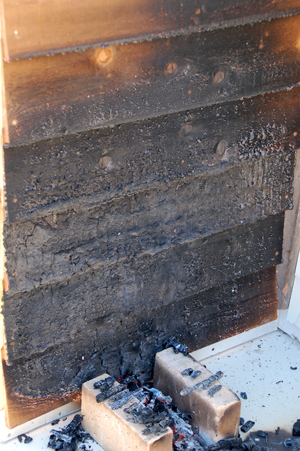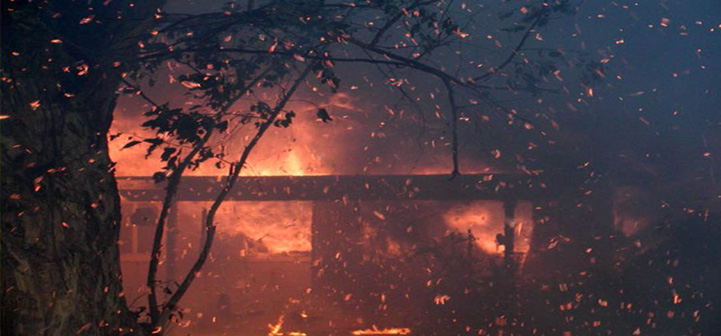- Many people probably think “ignition-resistant” is better than “combustible,” but not as good as “noncombustible.” That would be an accurate assessment. The California Building Code defines ignition-resistant in a specific way – based on meeting a minimum flame spread rating after the material has been subjected to a specified weathering procedure. A material labeled ignition-resistant has passed this test. This ignition-resistant definition is based on the International Building Code requirement for exterior fire-retardant lumber and plywood. An example of an ignition-resistant material is lumber that has been pressure impregnated with an exterior-rated fire retardant. Also see Fire Ratings for Construction Materials – eXtension

This fire demonstration compared a noncombustible (fiber-cement) siding product (left-hand side) with a wood siding product treated with an exterior-rated fire retardant chemical (right-hand side). Charring is evident on the FR treated wood in the first six courses. Vertical flame spread would have extended up the wall in a non-FR treated wood siding product.

A close up of an exterior-rated fire retardant siding product after a fire demonstration. Note charring on the wood, particularly noticeable in the first course (behind the bricks). FR treated wood still burns, but its performance is better than untreated wood. The activated fire retardant is evident in the second and third courses.

